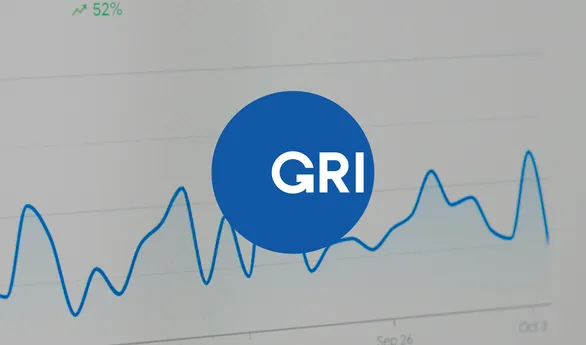The Global Reporting Initiative (GRI) is the world’s most widely used framework for sustainability reporting. Established in 1997, GRI helps organizations communicate their environmental, social, and governance (ESG) impacts in a structured and transparent way. GRI standards provide a modular, interrelated system of reporting principles and disclosures, enabling businesses to present credible, comparable, and consistent sustainability information.
GRI reporting is voluntary but often expected by investors, customers, and other stakeholders. It fosters transparency, accountability, and trust, empowering stakeholders to make informed decisions about a company’s sustainability performance. From large multinational corporations to SMEs, thousands of organizations across sectors and geographies rely on GRI standards to tell their sustainability story.
Key GRI reporting requirements
GRI reporting involves disclosing a range of ESG topics based on the GRI Universal Standards, Sector Standards, and Topic Standards. The requirements are designed to encourage businesses to focus on material topics—those most significant to their impacts and stakeholders.
Key components include:
- Materiality assessment: Identifying the sustainability topics most relevant to the organization and its stakeholders.
- Stakeholder engagement: Actively involving stakeholders in determining which issues matter most.
- Disclosure of management approach: Explaining how the organization manages its material topics.
- Quantitative and qualitative disclosures: Providing data and narratives on performance and outcomes.
- Assurance and transparency: Encouraging independent assurance and open communication on methodology.
GRI’s updated Universal Standards (2021) also require more rigor around human rights disclosures and the impact of business activities throughout the value chain, increasing expectations for organizations to gather and validate complex sustainability data.
Challenges companies face in GRI reporting
Despite the clear framework GRI provides, companies often face several challenges in executing high-quality reports:
- Data collection complexity: Gathering consistent, verifiable business data across different departments, geographies, and suppliers can be labor-intensive.
- Materiality confusion: Businesses may struggle to accurately assess and prioritize material topics, especially in dynamic industries.
- Stakeholder engagement gaps: Without structured tools, meaningful stakeholder consultation can be sporadic or superficial.
- Manual workflows: Many companies still rely on spreadsheets and raw data, which are prone to errors and lack audit trails.
- Audit readiness: Ensuring data consistency, traceability, and readiness for third-party verification can be daunting.
- Keeping up with evolving standards: GRI updates its standards regularly. Staying compliant and using up to date data demands agility and system support.
To address these challenges, many companies turn to ESG reporting software tailored for GRI compliance.
How ESG software supports GRI reporting
Modern ESG reporting tools are designed to alleviate the burdens of GRI reporting by automating processes, centralizing data management, and guiding users through complex requirements. They can help users analyze data, visualize data with a gri 1/33-124 data visualization tool, and automatically generate reports that meet stakeholder expectations.
Let’s explore a few leading platforms offering solutions aligned with the Global Reporting Initiative.
Sweep – GRI reporting made simple
Sweep provides an integrated ESG platform tailored for comprehensive sustainability reporting. While it supports multiple frameworks, its flexibility and automation capabilities make it ideal for GRI reporting.
Key features:
- Materiality mapping: Conduct in-depth materiality assessments, engaging stakeholders and prioritizing high-impact ESG topics.
- Data governance: Automate data collection through integrations, surveys, and uploads, ensuring structured stakeholder collaboration.
- Validation workflows: Sophisticated approval mechanisms ensure data is validated, traceable, and ready for assurance.
- Audit trails: Maintain full visibility into data changes, contributors, and documentation to support verification.
- Create custom reports: Export reports aligned with GRI disclosures and tailor content for different audiences.
Why Sweep? Sweep is ideal for large organizations seeking to unify sustainability workflows, ensure audit readiness, and produce GRI-aligned reports at scale.
Watershed – Gain control of ESG data
Watershed offers a robust data-centric ESG platform that simplifies the management of sustainability metrics critical for GRI reporting.
Key features:
- Integrated materiality tools: Perform materiality assessments, visualize risks, and align reporting with GRI’s topic standards.
- Data lineage: Provide auditors with complete visibility into diverse data sources, methodologies, and calculations.
- Collaborative reporting: Real-time collaboration ensures internal teams and external stakeholders can work seamlessly.
- Expert insights: ESG consultants help organizations navigate GRI disclosures and design effective management approaches.
Why Watershed? Watershed is well-suited for companies seeking to build trustworthy ESG reports with clear documentation and governance, particularly when dealing with complex datasets.
Greenly – Streamlined ESG reporting with AI support
Greenly combines automation and AI to simplify GRI-aligned reporting and streamline sustainability workflows.
Key features:
- AI-assisted materiality: Use machine learning to assess climate-related risks, stakeholder priorities, and sectoral relevance.
- Modular reporting tools: Map environmental disclosures to GRI metrics, including emissions, biodiversity, and circularity.
- Integrated data systems: Connect with marketing data, financial reporting systems, and operational platforms for real-time compliance.
- Collaborative audit preparation: Engage teams across the organization to prepare high-quality, defensible reports.
Why Greenly? Greenly is a smart option for companies that want to combine advanced technology with ease of use, making it easier to meet GRI expectations.
Greenomy – GRI compliance with enhanced automation
Greenomy empowers companies to manage sustainability disclosures effectively with a focus on data integrity and compliance.
Key features:
- Automated data workflows: Reduce manual tasks with AI-driven data collection, analysis, and gap assessments.
- Stakeholder management: Centralize engagement and streamline the identification of material issues.
- Value chain reporting: Collect data from suppliers and subsidiaries to cover the entire scope of ESG impacts.
- Impact-driven reporting: Build dynamic, customizable dashboards using a visual analytics platform for internal reviews and public reporting.
Why Greenomy? Greenomy suits businesses looking to enhance transparency through a business intelligence platform that improves their sustainability reporting.
Coolset – ESG tools for SMEs embracing GRI
Coolset is designed for small and mid-sized enterprises (SMEs) that are beginning or scaling their sustainability journeys.
Key features:
- Scope 1-3 emissions tracking: Accurately quantify carbon footprints and map emissions against GRI disclosures.
- Tailored reporting modules: Pre-built templates and workflows simplify GRI compliance.
- Materiality and strategy: Align sustainability strategy with GRI topics through guided assessments and visual dashboards.
- Accessibility: User-friendly platform designed for non-experts and first-time reporters.
Why Coolset? Coolset is a cost-effective, approachable tool for SMEs seeking to generate credible GRI reports without overcomplicating the process.
Best practices for implementing GRI reporting software
Successfully adopting GRI reporting software requires thoughtful execution. Here are best practices to ensure meaningful and efficient implementation:
- Establish data governance: Prioritize data integrity by assigning ownership, setting validation rules, and ensuring traceability.
- Engage stakeholders early: Incorporate stakeholder perspectives into materiality assessments and topic selection.
- Integrate systems: Sync ESG tools with ERP, HR, and supply chain systems to streamline data collection and reduce duplication.
- Provide training: Equip teams with the knowledge to use the software and understand GRI reporting requirements.
- Focus on continuous improvement: GRI reporting is iterative. Use software analytics to refine disclosures and drive ongoing performance gains.
Unlocking long-term value through sustainability reporting
GRI reporting plays a crucial role in shaping sustainable business practices. As expectations around transparency and accountability rise, ESG reporting software platforms have become essential tools to navigate the complexity of GRI standards. From materiality assessments to audit-ready disclosures, these tools help organizations stay credible, compliant, and impactful.
By selecting the right ESG reporting platform and following best practices, companies can move beyond basic compliance to unlock the strategic value of sustainability reporting—leveraging accurate data analysis, improving stakeholder trust, and driving long-term business resilience.



